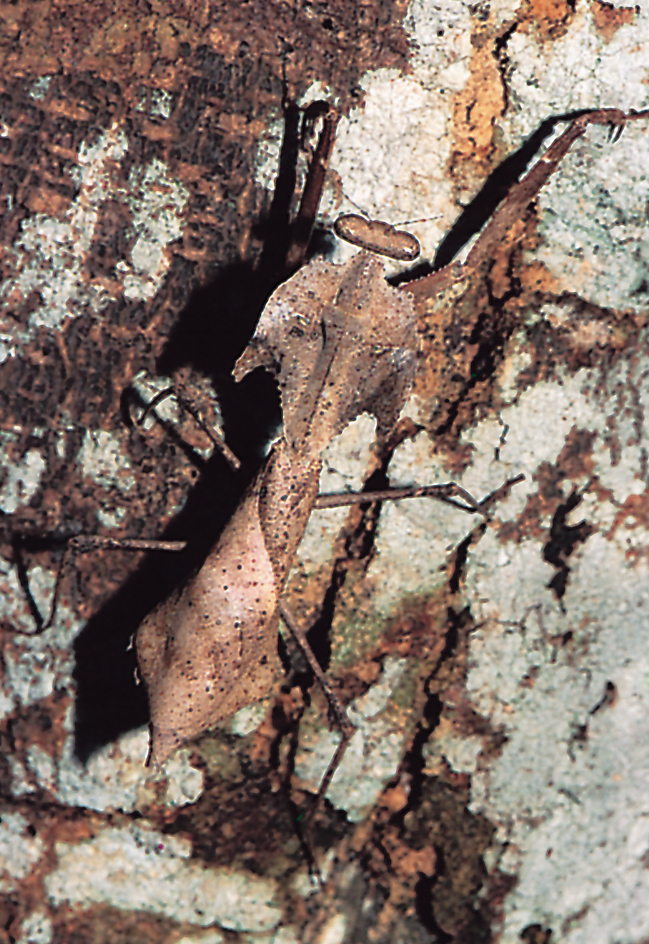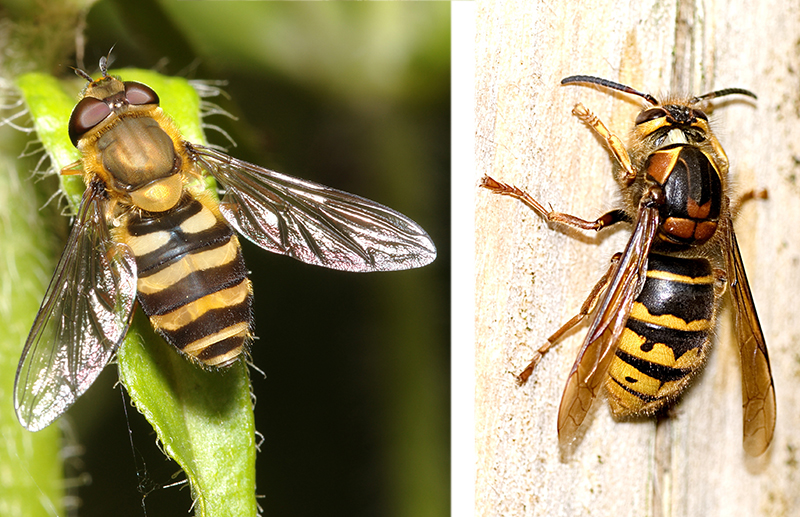Mimicry, << MIHM ihk ree, >> in biology, is when a living thing benefits by closely resembling another living thing or object. Mimicry can involve any of the senses, but it often works through similarities of color or structure. For example, stick insects have the color and shape of twigs. Such mimicry may help an organism (living thing) to avoid being eaten by predators (hunting animals).

In Batesian mimicry, a harmless organism resembles one that is dangerous or unpleasant. For example, some harmless king snakes have color patterns that resemble those of deadly coral snakes. Predators may avoid king snakes, confusing them with coral snakes.

In Müllerian mimicry, dangerous or unpleasant organisms resemble one another. For instance, Heliconius butterflies of the American tropics are generally unpleasant to eat. Species (kinds) of this butterfly that live in the same area often resemble one another. A predator that dislikes the taste of one species may thus avoid the other species. Similarly, many bee species have black and yellow stripes. A predator that is stung by one bee may avoid other species with similar markings.
Some organisms use mimicry to help them capture food. For example, the alligator snapping turtle has a wormlike lure on its tongue. The turtle wiggles this lure to attract the fish that it eats.
Certain plants use mimicry to attract insects. For example, hammer orchids produce flowers that resemble female wasps. This mimicry attracts male wasps, which help the orchids to spread their pollen.
